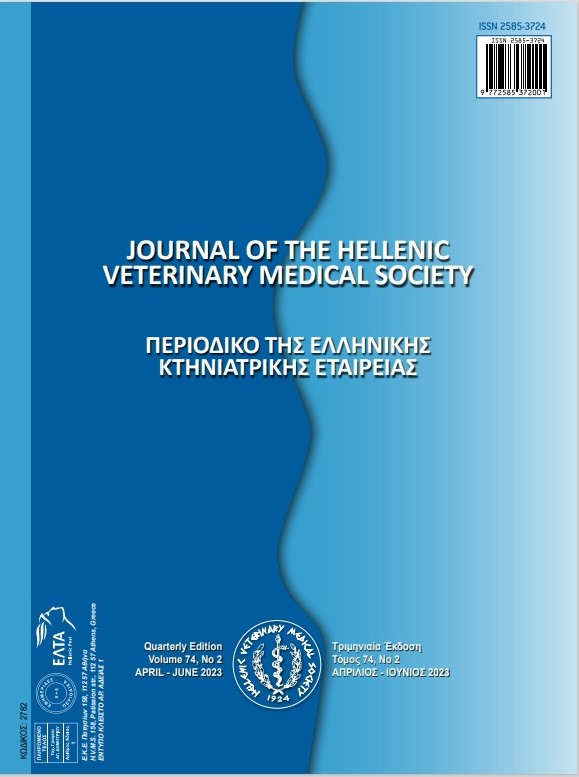Investigation of Oxidative Stress Levels in Cats with Chronic Kidney Disease
Abstract
The exact mechanism of oxidative stress caused by CRF is not understood. This study aimed to examine the oxidative stress levels and some biochemical parameters of cats diagnosed with CRF and to investigate the mechanism of oxidative stress formation. 30 cats diagnosed with CRF formed the CRF group, and 10 healthy cats formed the control group. For biochemical analyses, blood samples taken from the Vena cephalica antebrachii of cats were centrifuged. Serums were removed and analyses were carried out. Among these analyses, biochemical parameters such as symmetric dimethylarginine (SDMA), malondialdehyde (MDA), total antioxidant status (TAS), total oxidant status (TOS), and oxidative stress index (OSI) and urea, creatinine, ALT, AST, and ALP were examined. According to the findings of the study, while TAS levels were found to be low in cats diagnosed with CRF (P<0.05), TOS, OSI, MDA, and SDMA levels were found to be high (P<0.05). In addition, urea, creatinine values, ALP, and AST activity were found to be higher in cats diagnosed with CRF than in healthy cats (P<0.05), while ALT activity did not change (P>0.05). These findings indicate that CRF is associated with increased oxidative stress in cats and that certain biochemical parameters can be used in the diagnosis of CRF. Therefore, it is thought that oxidative stress is important in the pathophysiology of CRF and that the progression of the disease can be kept under control by playing an important role in the diagnosis, monitoring, and treatment planning of renal failure.
Article Details
- Zitationsvorschlag
-
Şahin, B., Duran, U., Küllük, E., Çenesiz, S., & Dalğın, D. (2025). Investigation of Oxidative Stress Levels in Cats with Chronic Kidney Disease. Journal of the Hellenic Veterinary Medical Society, 76(2), 9227–9236. https://doi.org/10.12681/jhvms.38714
- Ausgabe
- Bd. 76 Nr. 2 (2025)
- Rubrik
- Research Articles

Dieses Werk steht unter der Lizenz Creative Commons Namensnennung - Nicht-kommerziell 4.0 International.
Authors who publish with this journal agree to the following terms:
· Authors retain copyright and grant the journal right of first publication with the work simultaneously licensed under a Creative Commons Attribution Non-Commercial License that allows others to share the work with an acknowledgement of the work's authorship and initial publication in this journal.
· Authors are able to enter into separate, additional contractual arrangements for the non-exclusive distribution of the journal's published version of the work (e.g. post it to an institutional repository or publish it in a book), with an acknowledgement of its initial publication in this journal.
· Authors are permitted and encouraged to post their work online (preferably in institutional repositories or on their website) prior to and during the submission process, as it can lead to productive exchanges, as well as earlier and greater citation of published work.




